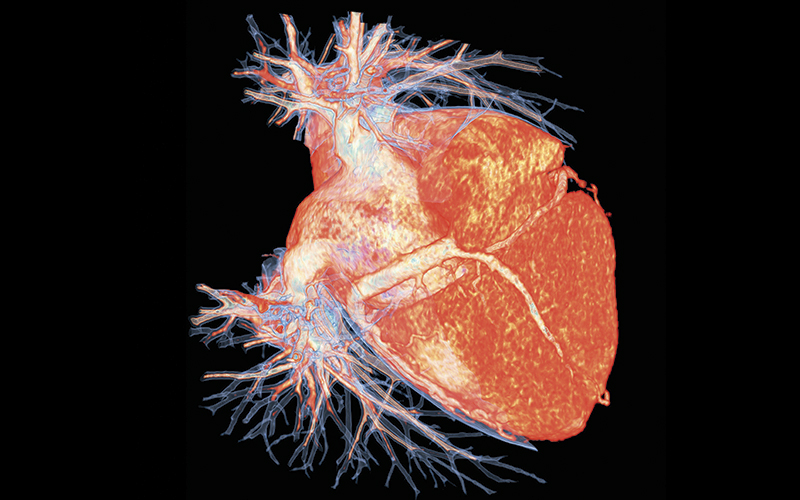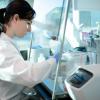In the fourth of our series looking at landmark moments in clinical chemistry, Stephen Clarke turns his attention to cardiac markers.

Revisiting older methodologies can help the interested reader trace the origin of current tests, learn about the author(s), the challenges they faced and appreciate the improved tests that are available today. From the vast literature, this short review selects landmark papers with background notes, paying tribute to those early pioneers who developed assays for the analysis of two early blood serum cardiac markers, for the diagnosis and investigation of cardiovascular disease, notably coronary heart disease, which may lead to life-threatening acute myocardial infarction (AMI).
Raised awareness of coronary heart disease
Evidence has been presented that atherosclerosis and vascular calcification occurred in the hierarchy of ancient Egypt, but it was only in the 18th century that blockage of the coronary arteries was first reported by the German physician Friedrich Hoffmann and later, in 1912, the US cardiologist James Herrick recognised the importance of the gradual narrowing of the coronary vessels and later coined the term “heart attack” for AMI – in 1918 he described the electrocardiographic changes on ligation of the coronary vessels. There is data to support the rising incidence of heart disease during the 20th century and by mid-century it was the most common cause of death in the US, due to an increased prevalence of atherosclerosis associated with smoking and diet.
However, advances were taking place in our understanding of protein chemistry, enzyme catalysis, metabolic pathways, and the sub-cellular location of enzymes combined with improved analytical instrumentation which provided more opportunities for new approaches in enzyme assays, which previously were mainly colorimetric. In cardiology there was an increasing clinical need for a rapid, simple and reliable indicator or “marker” to confirm that the patient had suffered a myocardial infarction to improve treatment options and outcomes, particularly if the electrocardiograph findings were equivocal.
Blood serum aspartate transaminase (AST): the first cardiac marker
In 1952, a 22-year-old US medical student called Arthur Karmen undertook an extended practical project at the Sloan Kettering Institute, New York City, under the direction of cardiologists John S LaDue and Felix Wroblewski. This was to explore the possible release of a heart enzyme from the myocardium released into blood as a marker for cardiac damage. Through literature research he found others had reported a high concentration of the transaminase AST in heart muscle and demonstrated the presence of AST in serum by incubation with substrates, α-ketoglutarate and aspartate and used quantitative amino acid paper chromatography to measure the rate of glutamate produced, which was related to AST activity under standard conditions and reported a reference range.
However, the method was laborious, required technical skill and took 36 hours to complete.
In an appendix to this paper, Karmen reports an alternative quick and simple method to measure AST activity, with the oxaloacetate as substrate reduced to malate by a second enzyme malate dehydrogenase in the presence of the reduced coenzyme nicotinamide adenine dinucleotide (NADH2), which is oxidised simultaneously to NAD.
This reaction was closely monitored using spectrophotometry by the decrease in light absorption at 340nm using the newly developed Beckman DU spectrophotometer for more accurate
rate reaction measurements.
NAD was first described in 1906 by British biochemists Arthur Harden and William John Young, and in 1936 the German scientist Otto Warburg described the role of the coenzyme in hydride transfer and the nicotinamide moiety as the site of redox reactions. Further studies by Horecker and Kornberg in 1948 measured extinction coefficient of the reduced coenzyme allowing calculation of international units of activity.
This landmark paper is highly significant in the use of coupling reactions and as an early example of using the NADH/NAD redox reaction in clinical enzymology. This concept was quickly adopted for other enzymes and modifications of the original AST assay were reported by Henry in 1960 and the coupled reaction was also linked to colorimetric end point assays. A reference optimised version of the preferred spectrophotometric method was reported in 1972.
Clinical reports
In 1955, LaDue and Wroblewski performed a clinical study of induced AMI in dogs and 50 human patients post-transmural AMI and found that AST was raised two to 20 times, four to six hours after the event and remained raised for two to five days. Despite the high sensitivity for AMI, AST is a non-specific cardiac biomarker with a wide tissue distribution, notably in liver, skeletal muscle and kidney and is raised in liver disease, acute renal disease, musculo-skeletal diseases and trauma. However, it was widely used to investigate cardiac events during the following decade despite its limitations.
Blood serum lactate dehydrogenase (LDH) as cardiac marker
Crystalline LDH was prepared from heart muscle by FB Straub in 1940 and some properties and structural heterogeneity were studied by JB Neilands. LDH was known to catalyse the reversible conversion of lactate to pyruvate and as a key enzyme in anaerobic glycolysis to continue to produce energy, particularly during heavy exercise. It was identified in serum by Hill and Levi in 1954 in their search for a possible tumour marker using a spectrophotometric procedure.
Following their work with AST, the Sloan Kettering cardiologists Wroblewski and LaDue used the same principle to devise a spectrophotometric procedure in 1955 using the above reaction in reverse and measuring the rate of decrease in extinction of NADH2 at 340nm. Others, notably Wacker and colleagues, began with lactate as substrate and measured the increase in extinction. Once again more convenient colorimetric methods were devised, notably by John King, based on the formation of coloured pyruvate dinitrophenylhydrazine.
Clinical reports
Many studies have reported elevated results in AMI and it was used along with serum AST as a useful cardiac marker and serum LDH is raised five to 10 hours post-AMI, peaking between three and six days and may remain high for 10 days. However, LDH is present in almost all human cells and is more abundant in cardiac and skeletal muscle, liver, kidney, and red blood cells. With increased cell breakdown LDH is also raised in leukaemia, certain solid tumours, acute hepatitis and renal disease.
LDH isoenzymes
Studies were performed using electrophoresis, pioneered initially by Arne Tiselius (1931), and with more relevant advances occurring at this time notably, by the English-born biochemist Oliver Smithies, who developed the use of starch as the medium for gel zone electrophoresis in 1955. Starch block electrophoresis was used to separate serum protein fractions and LDH activity was located in three fractions by Vesell and Bearn in 1957 at the Rockefeller Institute, New York. In the same year, Wieland and Plfeiderer demonstrated five distinct zones with LDH activity in serum and most tissue extracts. Further studies demonstrated that the fastest moving isoenzyme LD1 is richest in cardiac muscle with diminishing proportions of LD2-5. Many studies have shown that LD1 is significantly increased in AMI. As isoenzymes vary slightly in their primary structure, alternative methods have been used to distinguish specific isoenzymes. LD1 has been shown to be more resistant to heat, but was relatively more inhibited by oxalate than other isoenzymes.
AST and LDH assays
Current methods for measuring both enzymes do not differ significantly from the original assays, but are obsolete in the diagnosis of AMI, with the availability of improved serum cardiac markers and imaging techniques. Serum AST is now more often used to investigate liver disease. LDH is more used clinically in the investigation of various forms of anaemia such as haemolytic anaemia and to monitor certain germ cell tumours, such as testicular cancer and leukaemia.
Arthur Karmen
Following his medical qualification, Arthur Karmen specialised in chromatography, notably at the National Heart Institute, and then was appointed the Associate Professor in Nuclear Medicine at Johns Hopkins (1963-68), later Clinical Director at New York University and finally from 1971 at the Albert Einstein College of Medicine, directing studies on therapeutic drug monitoring, kinetic enzyme assays and immunoassays. He was recognised by many awards and by the American Association of Clinical Chemistry in 1991 for “outstanding contributions in a specialised area of research”.
Concluding comments
This was a remarkable decade that introduced novel spectrophotometric assays of AST and LDH to expand the range of serum enzymes, in addition to amylase and alkaline phosphatase available for clinical purposes. It inspired the development of other enzyme assays using this principle, increased the availability and use of spectrophometers in routine clinical chemistry, while further progress was also achieved by more convenient electrophoretic techniques to investigate isoenzymes and their clinical applications. The focus on heart disease remains highly topical today, with constant media attention on risk factors, improving lifestyle and new preventative treatments.
Stephen Clarke is a retired IBMS fellow.
He previously worked in clinical chemistry at Southmead Hospital, Bristol.




